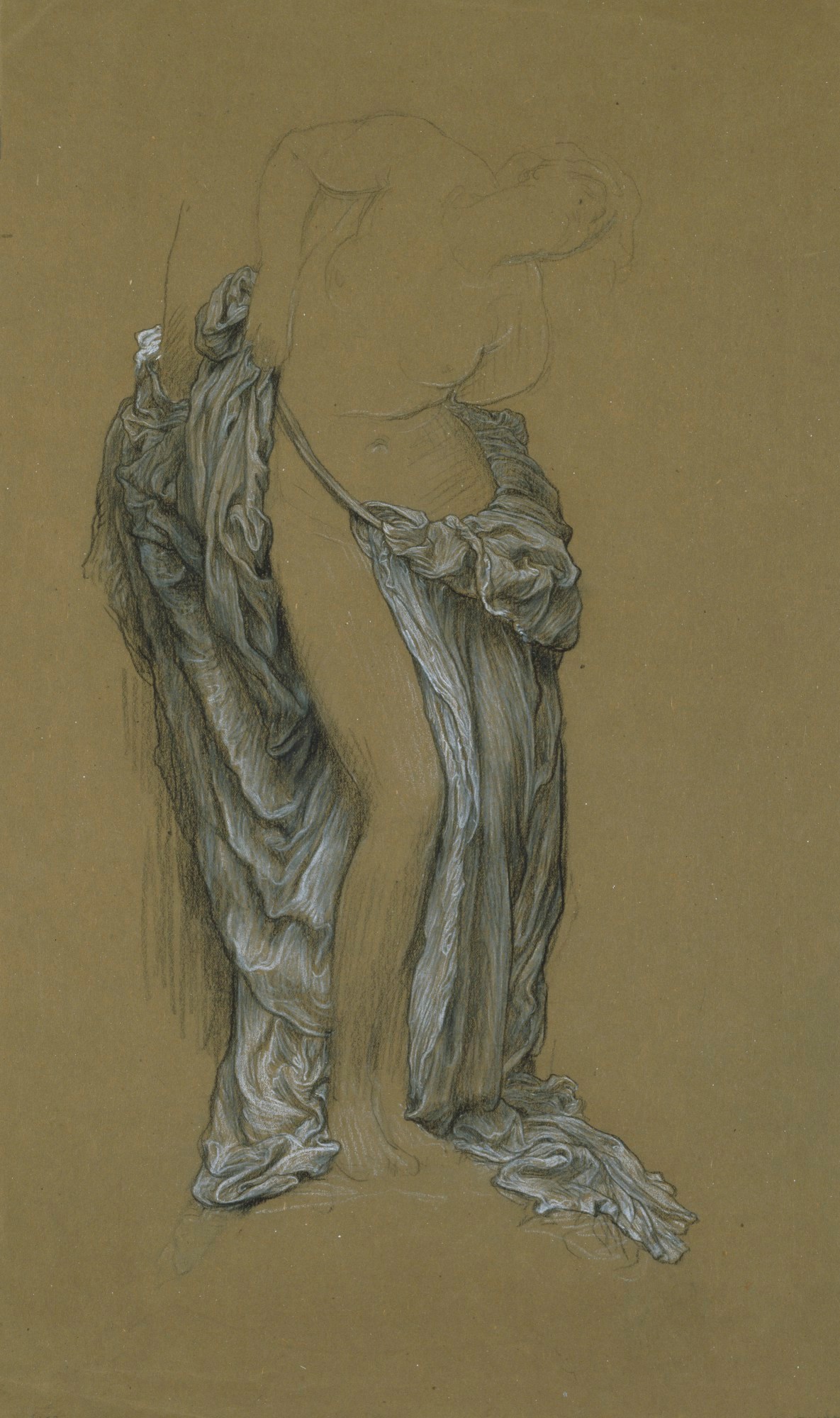
Lord Leighton PRA, Study for 'Perseus and Andromeda', ca. 1891.
Black and white chalk on brown wove paper. 544 mm x 325 mm. © Photo: Royal Academy of Arts, London. Photographer: Prudence Cuming Associates Limited.
This image is not available to download. To licence this image for commercial purposes, contact our Picture Library at picturelibrary@royalacademy.org.uk
Study for 'Perseus and Andromeda', ca. 1891
Lord Leighton PRA (1830 - 1896)
RA Collection: Art
On free display in Collection Gallery
A study for the figure of Andromeda in 'Perseus and Andromeda' (ca. 1891, The Walker, Liverpool), in which she is rescued from a sea monster by the Greek hero on his winged horse, Pegasus. Leighton's favourite model, Dorothy Dene, posed for the twisting figure of Andromeda tied to a rock. The figure depicted here is very close in pose to the finished version, except that Leighton eventually elongated the torso, making it more graceful and accentuating the sense of Andromeda's dramatic struggle.
However, the main interest here is not in Andromeda's body but in the drapery which hangs in folds around her hips and legs. This is drawn in detail with parallel lines of black and white chalk, while the body is sketched in lightly. Leighton's expertise in depicting drapery is clear from this study in which he rehearsed the subtle effects of light and shade on the fabric, caused by the contrast in the shadow of the monster's wing and the golden light from the sun shining behind Perseus. See also 03/2444.
There is a faint outline on the verso, possibly of an arm.
This group includes tracings, drawings and a sketch model, all preparatory studies for two of Leighton's paintings based on the same myth, 'Perseus and Andromeda' (ca. 1891, Walker Art Gallery, Liverpool) and 'Perseus on Pegasus Hastening to the Rescue of Andromeda' (ca. 1895-6, Leicestershire Museums).
In Greek myth, Andromeda was the daughter of King Cepheus and Queen Cassiope of Ethiopia. When the Queen boasted that Andromeda was more beautiful than the Nereids (the daughters of a sea god, Nereus), Poseidon retaliated by sending floods and a sea-monster to attack Ethiopia. Eventually, in order to placate the creature, Cepheus and Cassiope were forced to sacrifice their daughter. Andromeda was chained to a rock but she was rescued by Perseus before the monster could reach her.
Three of the studies, two drawings and a sketch model for the first painting 'Perseus and Andromeda' reveal Leighton's preparatory work for the complex, twisting female figure. He returned to the same myth several years later with 'Perseus on Pegasus Hastening to the Rescue of Andromeda'. This composition omitted Andromeda altogether to focus entirely on Perseus on the winged horse above a rocky coastal landscape.
Object details
544 mm x 325 mm
Start exploring the RA Collection
- Explore art works, paint-smeared palettes, scribbled letters and more...
- Artists and architects have run the RA for 250 years.
Our Collection is a record of them.



